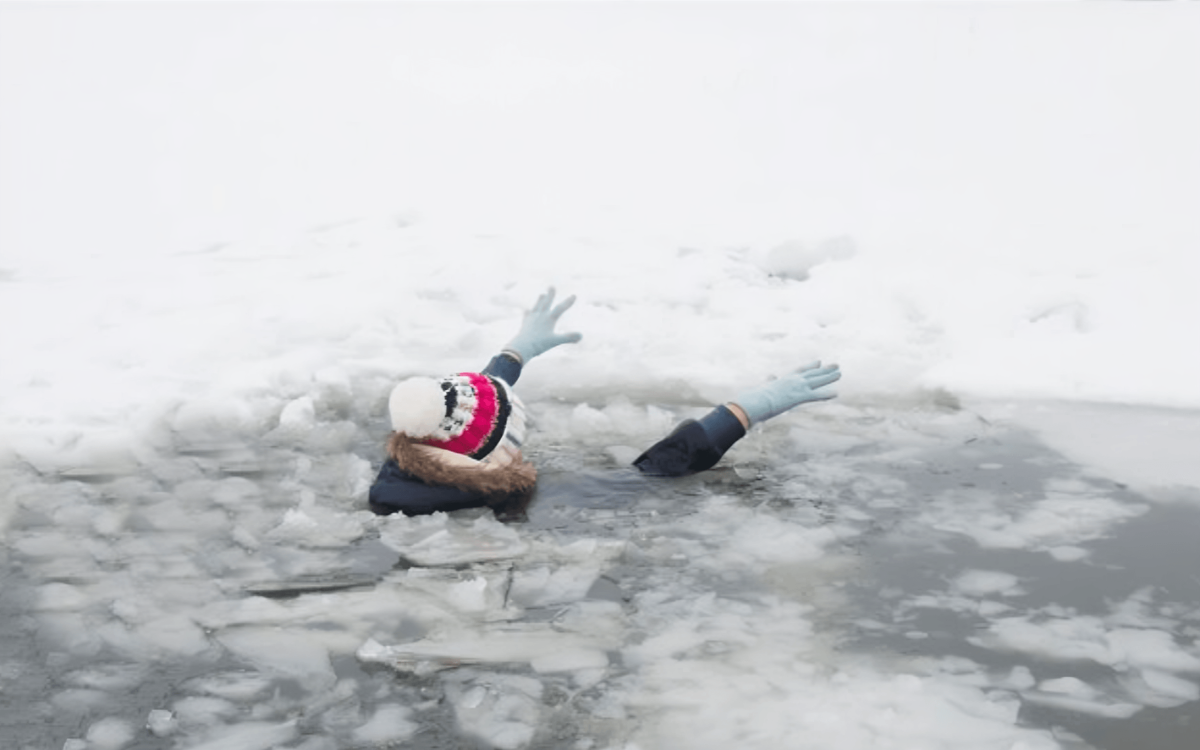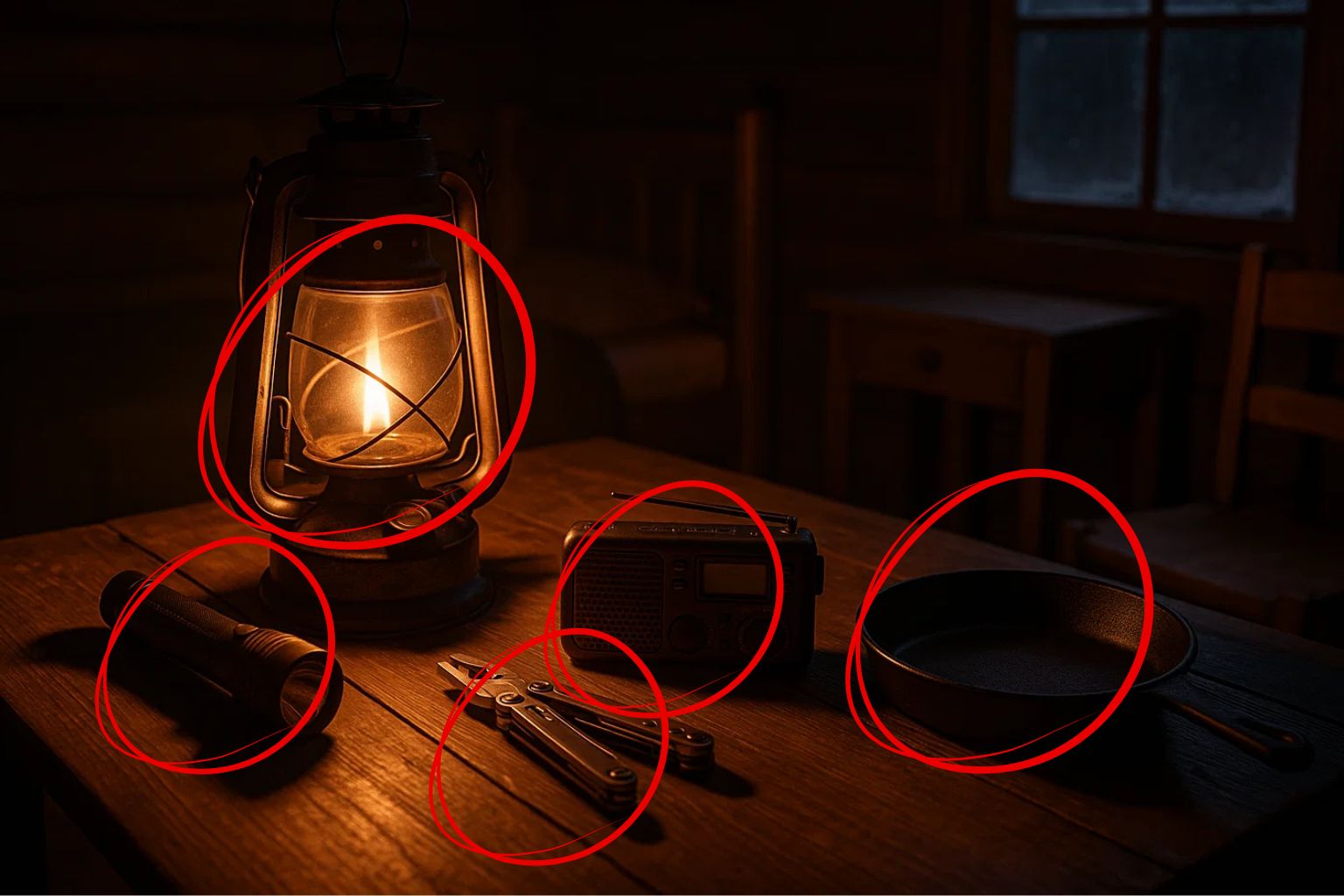You’re out ice fishing or hiking on a frozen lake, enjoying a calm and peaceful day. The air is crisp, the snow crunches beneath your feet, and everything feels still. Then, without warning, the ice beneath you cracks, and before you know it, you’re plunged into freezing water. It’s the kind of nightmare no one expects to happen to them, but it’s a real danger for anyone who spends time on frozen lakes. Learning how to survive falling through ice isn’t just an extra skill, it’s something that could save your life. Most people don’t understand just how much of a shock that icy water is to the body. The second you hit the water, you’re in cold shock. You automatically gasp, and if your head goes under, you risk inhaling water. Your heart pounds, your breathing goes wild, and in a matter of moments, your arms and legs start to feel heavy and numb. The truth is, you only have a few minutes before your body begins to shut down. It’s natural to panic, but if you can focus on slowing your breathing and staying calm, you give yourself a real chance. In those first crucial moments, knowing how to survive falling through ice is about keeping your wits, staying focused, and acting quickly.
Understanding the Immediate Danger
If there’s one thing you need to understand about falling through ice, it’s that cold shock can kill you faster than you think. The moment that freezing water hits, your body’s reflex is to gasp uncontrollably. If your head’s underwater, this could mean gulping in water instead of air, leading to drowning.
The second danger is the rapid loss of muscle control. Your body, in shock, diverts blood to your core organs, and your arms and legs quickly stop functioning. At this point, keeping control of your breathing is crucial to surviving the fall through ice. Breathe deeply, slowly, and fight the panic. Those few seconds you buy yourself could be the difference between life and death. Cold water survival is all about understanding how to control your body’s reaction in the most extreme conditions.
Step-by-Step Escape
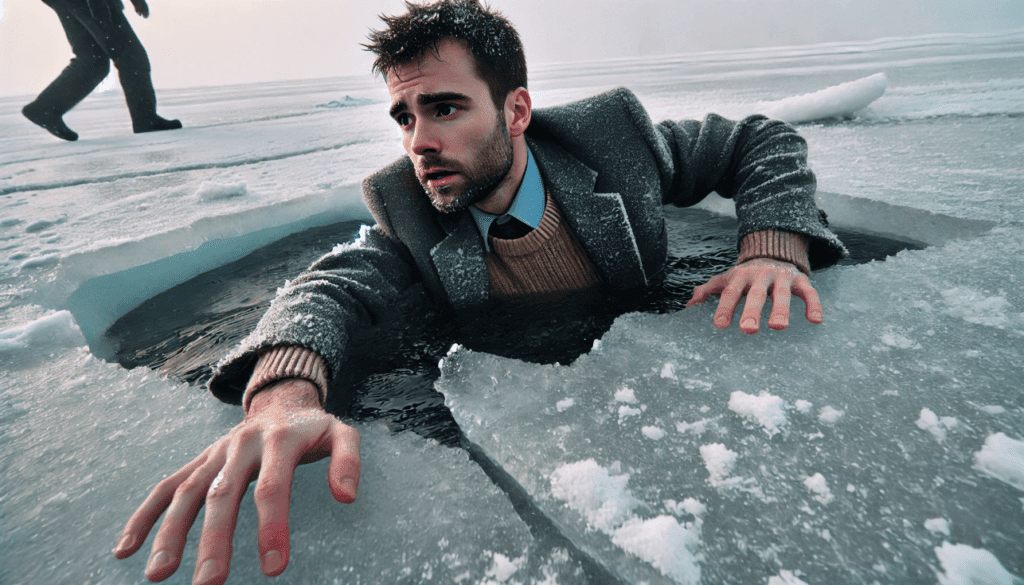
Step 1: Okay, first things first, stay calm. I know it feels like panic mode, but you need to take a second, catch your breath, and get your bearings. That water’s freezing, but freaking out won’t help. Now, don’t even think about trying to bash through fresh ice. You’ve got to head back to the hole you fell through, yeah, that same spot. That ice is already broken and is more likely to hold your weight now. Save your energy, you’re gonna need it.
Step 2: Alright, time to make your move. Get yourself as flat as you can in the water. It sounds counterintuitive, but you need to spread your weight out as much as possible across the ice so you don’t crack it again. Start getting your arms and elbows up on the ice, it’s your grip to pull yourself out. You want to cover as much surface area as you can with your body to avoid breaking through again.
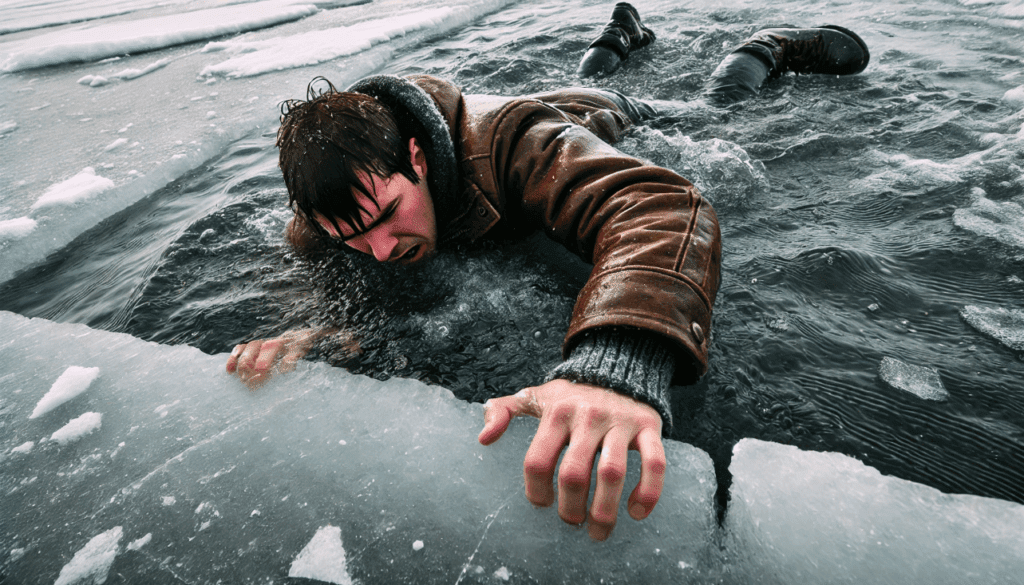
Step 3: Now comes the tough part, kick those legs like there’s no tomorrow. Seriously, start kicking hard. That’s what’s going to help you push yourself up onto the ice. It’s all about using your arms to pull while your legs do the kicking to give you momentum. Just keep at it, kick, pull, kick, pull, until you’re all the way out of the water and on solid ground.

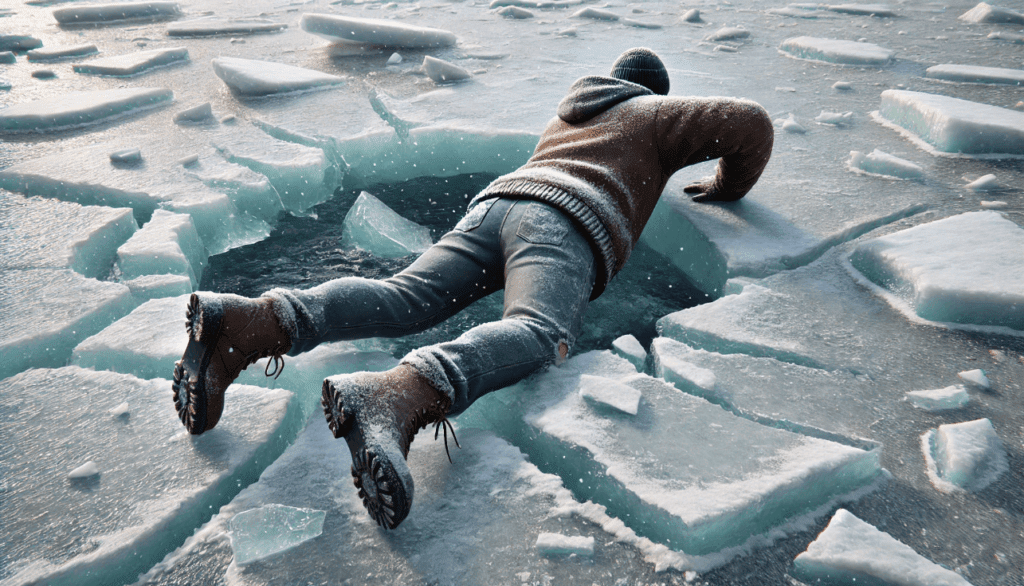
Step 4: Now that your upper body is out, don’t try to stand up. I know you’ll be tempted to, but the ice around the hole is weak, and putting all your weight in one spot could send you crashing right back into the water. Instead, roll away from the hole. Rolling spreads your weight out and reduces the risk of breaking through again. In these moments, ice rescue techniques are what can save your life. Knowing how to move and position yourself out there makes all the difference in a life-or-death situation.
After You’re Out
You’re out of the water, but your battle isn’t finished yet. Now, it’s all about preventing hypothermia. Wet clothes drain your body heat fast, and in freezing conditions, that can be deadly. If you have dry clothes, put them on immediately. If not, wrap yourself in whatever you have a survival blanket, extra clothing, anything that can trap your body heat.
If you’re close to shelter, get inside fast. Once indoors, the focus should be on warming your core slowly and safely. Drink warm (but non-alcoholic) fluids and wrap up in blankets. Avoid jumping into a hot bath, sudden temperature changes can send your body into shock. Hypothermia prevention is a delicate process, and gradual warming is the safest way to restore your body temperature.
If you’re stuck outside, stay active. Light exercises like jogging in place or swinging your arms will keep your blood flowing, but don’t overdo it, you need to conserve your energy. Surviving falling through ice isn’t just about getting out of the water; it’s about managing the cold and staying alive long enough to reach safety.
Recognizing Dangerous Ice
Of course, the best way to survive falling through ice is to avoid going through it in the first place. Recognizing dangerous ice is a skill every prepper or survivalist should keep in their toolkit. Ice can be unpredictable, and even the most experienced outdoorsmen can get caught off guard. So, how do you know if ice is safe?
The first rule is knowing the thickness of the ice. For walking or skating, the ice should be at least four inches thick. If you’re using a snowmobile or ATV, aim for five to seven inches. For vehicles, you’ll need eight to twelve inches of solid ice. Never guess, always test it yourself. Ice color is another key indicator. Clear, blue ice is generally the strongest, while white or opaque ice is usually weaker because it’s refrozen snow packed with air pockets. If the ice looks gray, that’s a warning sign, gray means water is present, making the ice dangerously unstable.
Signs the Ice Might Be Unsafe
Even if the ice looks thick, don’t assume it’s safe. There are always warning signs that ice may be weaker than it seems. For example, listen for cracks or pops underfoot, those sounds mean the ice is shifting, and that’s a clear warning of potential danger. Snow-covered ice can also be deceptive, as snow insulates the ice, slowing down the freezing process and often leaving it weaker underneath. If you notice slush or water on the surface, get off immediately, these are red flags that the ice is melting and unsafe. Always carry a spud bar or ice auger to test the thickness as you go, and don’t wander too far from shore unless you’re absolutely sure the ice can hold your weight.
Preventing Falls
Preparation is key when it comes to avoiding an ice-related emergency. If you’re serious about cold water survival, carrying the right gear can make all the difference. Ice picks are non-negotiable, these small tools can be worn around your neck and help you pull yourself out of the water. They give you the grip you need on the slippery ice.
If you’re out with friends or family, always bring a throw rope or bag. In the event someone else falls through, you can toss them the rope from a safe distance and pull them to safety. Running toward them could put you at risk of falling in yourself.
Consider wearing a life jacket or float coat. Many people assume they won’t need one on ice, but a life jacket can keep you afloat and buy you time. It’s not about over-preparing, it’s about being smart and prepared for anything.
When traveling in a group, always keep an eye on each other. If someone falls through, you need to act fast but safely. Rather than running toward the person, use a long branch, rope, or even a jacket to pull them out without risking yourself. Survival skills aren’t just about knowing what to do in the heat of the moment, they’re about preparation and smart decision-making.

